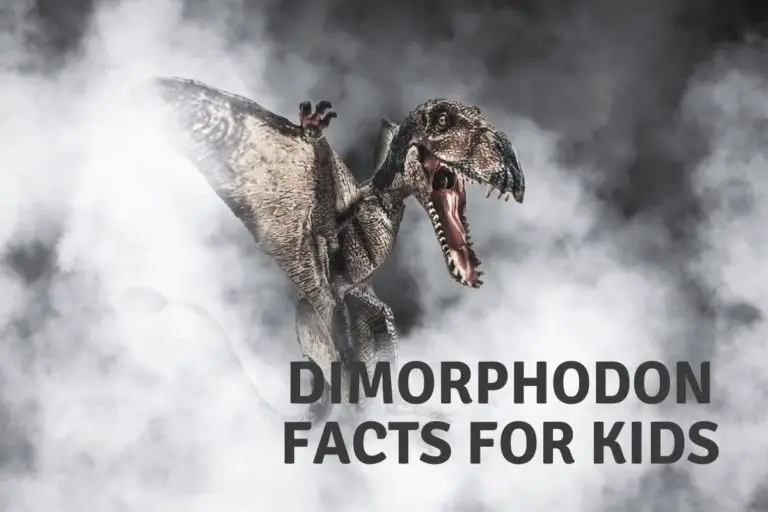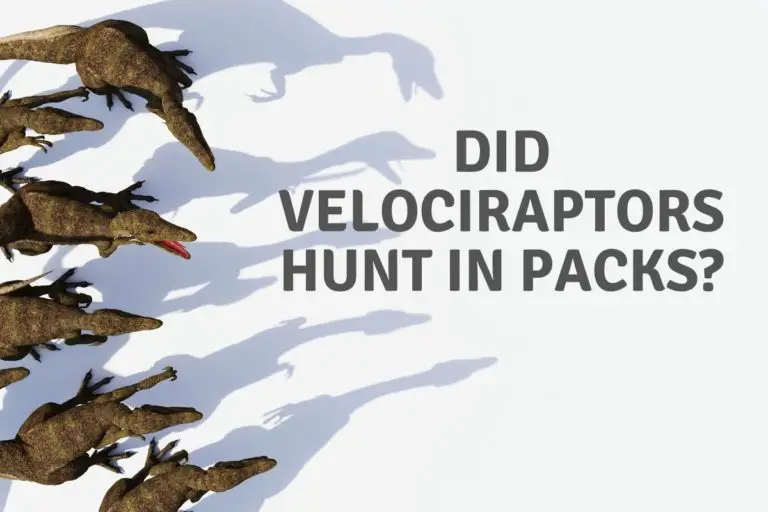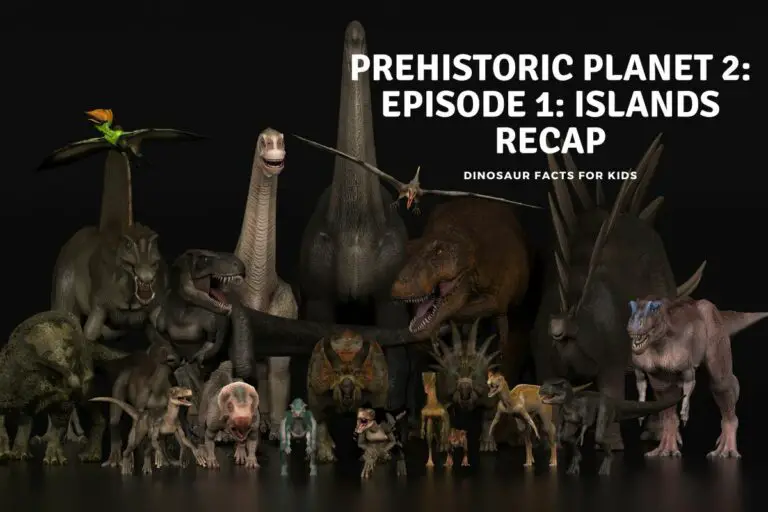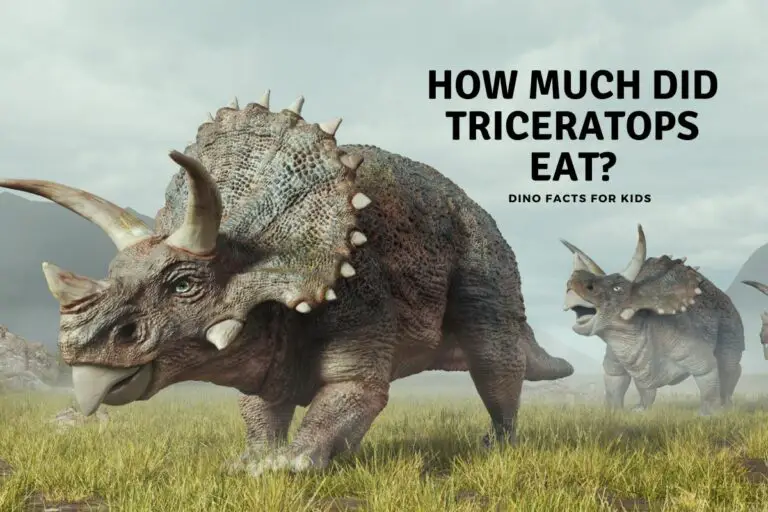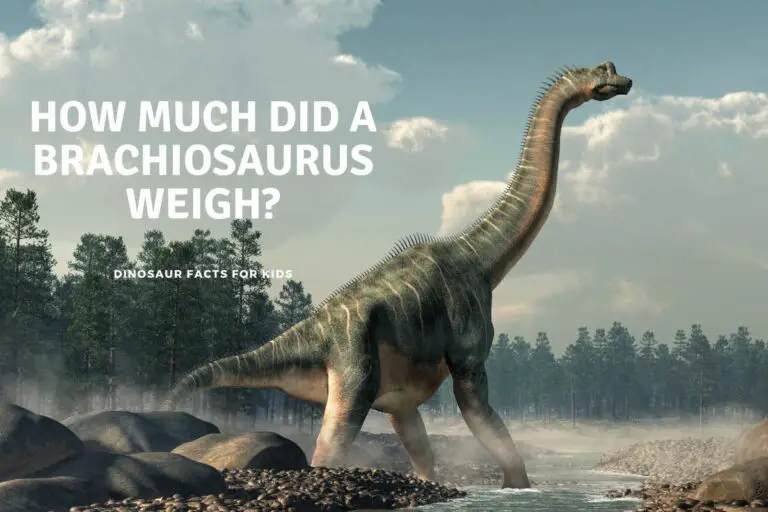Prehistoric Planet 2: Episode 3: Swamps Recap
Prehistoric Planet 2: Episode 3: Swamps
Prehistoric Planet 2 was shown of 5 days in May 2023, and we take a look at each episode to highlight some of the events and prehistoric animals you can see within it. With the narration of the renowned David Attenborough, the CGI that would not look out of place in a Jurassic World movie and with the unique approach to present it in a modern day nature documentary version it looks to be as excellent as the first series last year.
You can watch the episodes this week on this link for apple TV.
If you want a full list with some information about each animal in the whole series of Prehistoric Planet 2 you can check out this page where we cover each episode and the animals / reptiles / dinosaurs and more in more detail.
Episode 1: Islands | Episode 2: Badlands | Episode 3: Swamps | Episode 4: Oceans | Episode 5: North America
Just before you Jump In we have a table listing the animals that appeared in prehistoric Planet episode 3 below.
Table 1: Animals in Prehistoric Planet 2 episode 3
| Animal | Maximum Size | Weight | Habitat | Classification |
|---|---|---|---|---|
| Pterosaur ( Mongol Giant?) | Maybe 30+ foot Wingspan | Unknown | Mongolia | Pterosaur |
| Shamosuchus | 4 m (13m) in length | Unknown | Mongolia, | Reptile / Crocodile |
| Gar | Wide range (this one about 1 metre – 3feet) | wide range | Argentina | Fish |
| Austroraptor | 16-20 feet. 5-7 metres | 200-600 lbs (90-300 kg) | Argentina | Dinosaur |
| Masiakasaurus | 1.8 to 2 metres (6-7 feet) | 20 kg (44lbs) | Madagascar | Dinosaur |
| Beelzebufo | 1.5 feet (50 cm) | 4 kg (10 lbs) | Madagascar | Amphibian |
| Rapetosaurus | 15 metres (49 ft) in length | 10,000 kg (22,000 lbs.) | Madagascar | Dinosaur |
| Pachycephalosaurus | Around 4.5 meters, (14-15 feet) | Around 370 – 450 kg, 800 – 1000 lbs. | America | Dinosaur |
| Edmontosaurus | 12 metres (39 feet) | 5-6,000 kg (11-13,000 lbs. | America | Dinosaur |
| Triceratops | 8–9 metres (26–30 feet) | 5-9000 kg (11-20,000 lbs.) | America | Dinosaur |
| Tyrannosaurs rex | 13 metres – 42 feet | 7-8000 kg (15 – 19,000 lbs.) | America | Dinosaur |
Prehistoric Planet 2: Episode 3: swamps Recap
Here we take a look at the third episode in the series titled swamps which explores the damper areas of the world 66 million years ago and introduces some new, and even newly discovered animals and dinosaurs/
In this Prehistoric Planet Episode there is of course a focus on the biome Swampland, but also how it allows prehistoric animals to live thieve and survive as well as compete.
Prehistoric Planet 2: Swamps: Asia
We are shown a nesting ground for an unnamed pterosaur, although as it is likely set in what is now Mongolia / Uzbekistan it may be a newly, and very Very partially discovered Pterosaur – currently nicknamed the Mongol Giant.
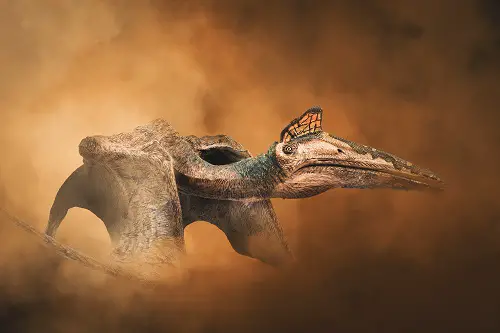
Although the pterosaurs in Episode 3 of prehistoric planet 2 are babies, they would have grown to have a wingspan of over 30 feet. ( they were in the same family as Quetzalcoatlus and Hatzegopteryx) so need to move on from the small swampy islands.
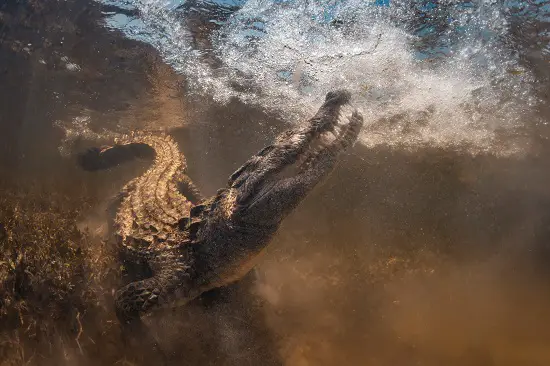
While they do, and as we have seen in similar episodes, being young in the prehistoric world comes with plenty of risks. for the baby Pterosaurs that risk first comes in the form of a prehistoric crocodile Shamosuchus, quite a few of them.
Prehistoric Planet 2: Swamps: Mongolia
the show then transports us to Argentina, or what is now Argentina, and we are looking at a fresh water fish, a Gar ( but probably not a garfish as its called as that lived in the oceans) It is being watched by a Piscivore dinosaur called Austroraptor, which was a medium sized member of the raptor with cone shaped teeth.
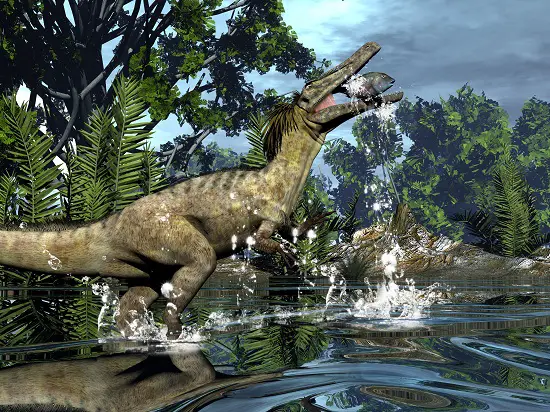
It shows how difficult it is for younger animals to mark their place in the world, and is this instance it is a juvenile Austroraptor trying to find a fishing spot.
Although there is a battle, which the young Autroraptor doesn’t win!, the juvenile does eventually get its meal!
Prehistoric Planet 2: Swamps: Madagascar
On the return to Madagascar we see Masiakasaurus again, this time running face to face into a Beelzebufo frog / toad who is trying to get to swampy ground to attract mates.
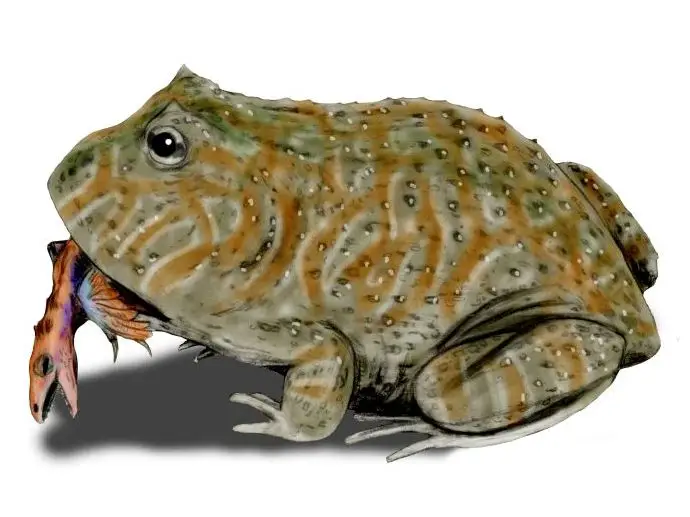
Nobu Tamura (http://spinops.blogspot.com), CC BY 3.0 https://creativecommons.org/licenses/by/3.0, via Wikimedia Commons
however, big as he is there is always a bigger fish animal, and in this case it is a herd of Rapetosaurus who also are after the muddy environment, although to take mud baths and not attract a mate.
The frog, while much smaller is able to scare the much larger Rapetosaurus, and if you think this is unrealistic have a think about your, or most peoples reaction, when they see a spider or a cockroach.
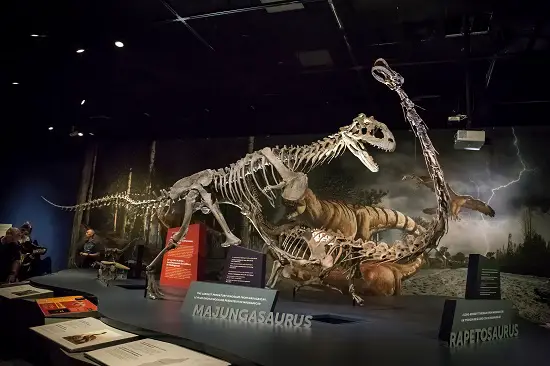
Prehistoric Planet 2: Swamps: North America
We now move to look at a herd of Pachycephalosaur who are rutting and butting heads to defeat other males and to impressive females, it also looks at the more recent studies that the Pachycephalosaurus may have been an Omnivore instead of a herbivore – especially when it was younger. We have more here on this.
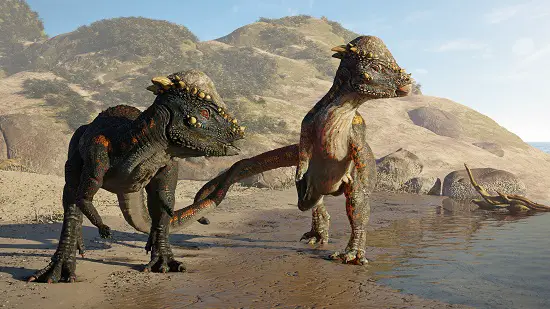
Staying in North America we get a look at some grazing Edmontosaurus and triceratops peacefully eating.
Although they are being watched by a pair of Tyrannosaurs Rex who don’t want to take the triceratops on in the day time at least and with the Edmontosaurus being so close decide to bide their time.
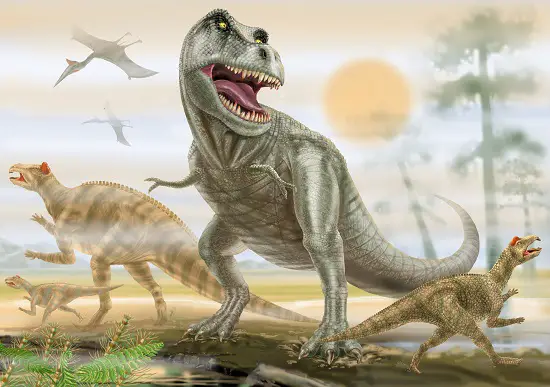
So we are shown a night scene with the T-Rex hunting the Edmontosaurus, successfully, and suggesting that T-Rex did hunt in packs ( more here) to tackle large dinosaurs at least. the hunt also shows how intelligent they may have been as pack hunters, with distraction and coordination being demonstrated.
Then we close out the episode and move on to the oceans environment in the next episode.
You can check out The Prehistoric Planet Episode 4: oceans recap and other recaps here on the site as well.
Episode 1: Islands | Episode 2: Badlands | Episode 3: Swamps | Episode 4: Oceans | Episode 5: North America
Conclusion
While the swamps of the Late Cretaceous certainly had more food for the life that lived there, there were also plenty of risks, whether that was from hungry Crocodiles or from Angry Frogs there was always something ready to take a bite from animals who called the swamps their homes.
Hi, I am Roy Ford a General Studies and English Teacher who has taught all over the world. What started as a fossil collection became a great way to teach, motivate and inspire students of all ages and all over the world about dinosaurs and from that and children’s love of dinosaurs came the site dinosaur facts for kids, a resource for all ages.


